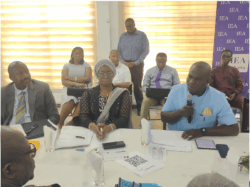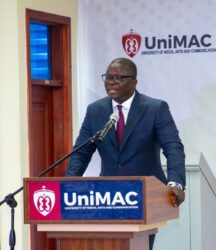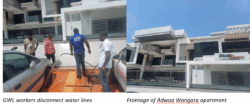By Sammy CRABBE
In Part 1, we explored the foundational elements of Ghana’s digital economy transformation through the ‘One Square Mile’ concept, which will serve as a dedicated digital hub for innovation and economic transformation.
We discussed its strategic location, the need to relocate government ministries, and potential challenges such as political resistance, funding constraints, and socio-economic disparities.
We also examined the importance of a phased approach, emphasizing infrastructure development, regulatory frameworks, and public-private partnerships. Now, we delve into the governance structures that will ensure the zone’s long-term viability and explore lessons from successful international models.
Governance and operational structures
The ‘One Square Mile’ will have its own police force, courts, administration, and governance structures to ensure accountability and efficiency. The courts will function as a special division within the national judicial service, staffed by judges and clerks committed to integrity.
The police force will be a specialized unit within the Ghana Police Service, comprising officers selected for their ethical standards and compensated adequately to maintain a corruption-free environment. Essential infrastructure, including schools, stable power and excellent healthcare and well-equipped facilities will support businesses and residents within the zone.
The private sector will be encouraged to invest in residential apartments and office spaces, while the government will focus on building civil infrastructure to facilitate growth. The zone will be designated as a free zone, offering tax incentives and business-friendly policies to attract both local and international investors. With a meticulously planned layout and world-class infrastructure, the ‘One Square Mile’ will serve as a pilot project that can be expanded incrementally based on lessons learned.
Learning from international models: challenges and pushbacks
Despite their success, these international models faced opposition before they became thriving economic hubs.
China’s Special Economic Zones (SEZs):
China’s economic transformation was anchored on SEZs, with the first four created in 1980—Shenzhen, Zhuhai, Shantou (all in Guangdong province), and Xiamen in Fujian province. These locations were strategically placed near Hong Kong, Macau, and Taiwan because they had strong capitalist economies, established international trade networks, and access to foreign expertise.
The goal was to integrate capitalist mechanisms into China’s socialist economy without overhauling the entire system overnight. These zones operated under market-driven economic policies, tax incentives, and regulatory independence, attracting foreign investment and fostering economic growth.
However, the initiative faced significant pushback. Communist hardliners saw SEZs as a betrayal of socialist principles, sparking internal debates about whether capitalism should be allowed to flourish within China’s borders.
Additionally, concerns over foreign influence, labour exploitation, and inequality led to skepticism. Policymakers had to prove that these zones would not only attract investment but also create jobs and drive technological advancement. The success of Shenzhen, which transformed from a fishing village into a global technology hub, ultimately silenced critics and validated the SEZ model.
Dubai’s Free Zones:
Dubai’s economic transformation was largely driven by its free zones, which provided a business-friendly regulatory framework separate from the UAE’s civil legal system. These zones adopted English common law, which assured foreign investors of a stable and predictable business environment. The success of Dubai’s Jebel Ali Free Zone (JAFZA) inspired the creation of several other specialized free zones catering to industries such as finance, media, and technology.
However, these reforms faced stiff resistance from traditionalists and conservative leaders who feared that foreign investment would erode Dubai’s Islamic identity. Sheikh Mohammed bin Rashid Al Maktoum had to convince stakeholders that the economic benefits would far outweigh any cultural dilution. He famously reassured them that foreign businesses could not ‘relocate their buildings back to their home countries,’ meaning that investments would remain within Dubai.
By implementing clear governance frameworks, ensuring top-tier infrastructure, and providing tax incentives, Dubai cemented its place as a global trade and financial centre. These case studies reveal that while economic transformation is achievable, it is never without resistance. In the next instalment, we will explore how other global financial and business hubs, such as Singapore and the City of London, overcame similar challenges to build sustainable economies, and what Ghana can learn from them.
>>>the writer is a PhD researcher specializing in blockchains and decentralized finance at the University of Bradford. He holds an MBA in International Marketing and a post-graduate certificate is research from the International University of Monaco. Sammy was the first president of the Ghana Business Outsourcing Association and developed Africa’s first data entry operation and Ghana’s first medical transcription company. He can be reached via [email protected]










